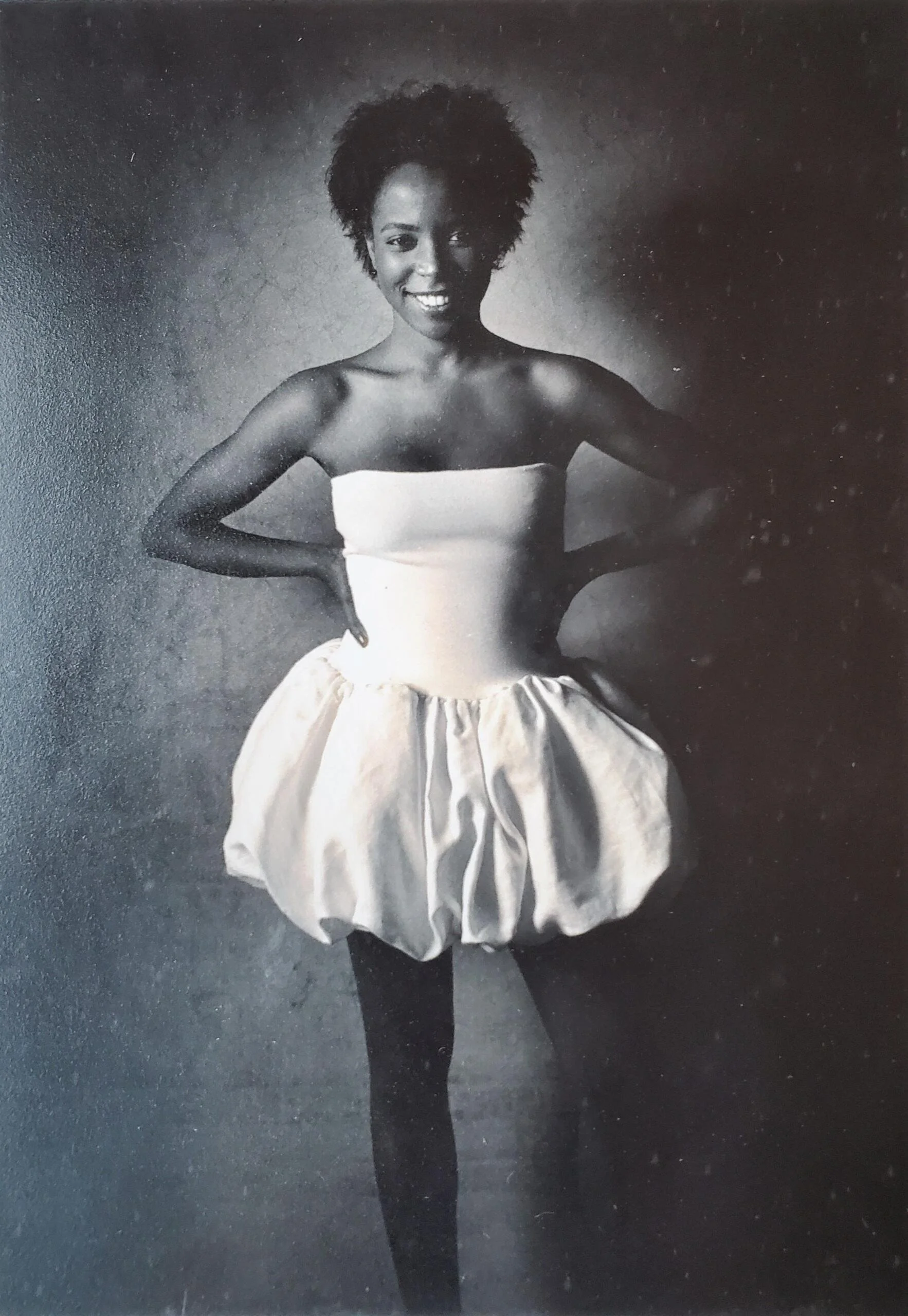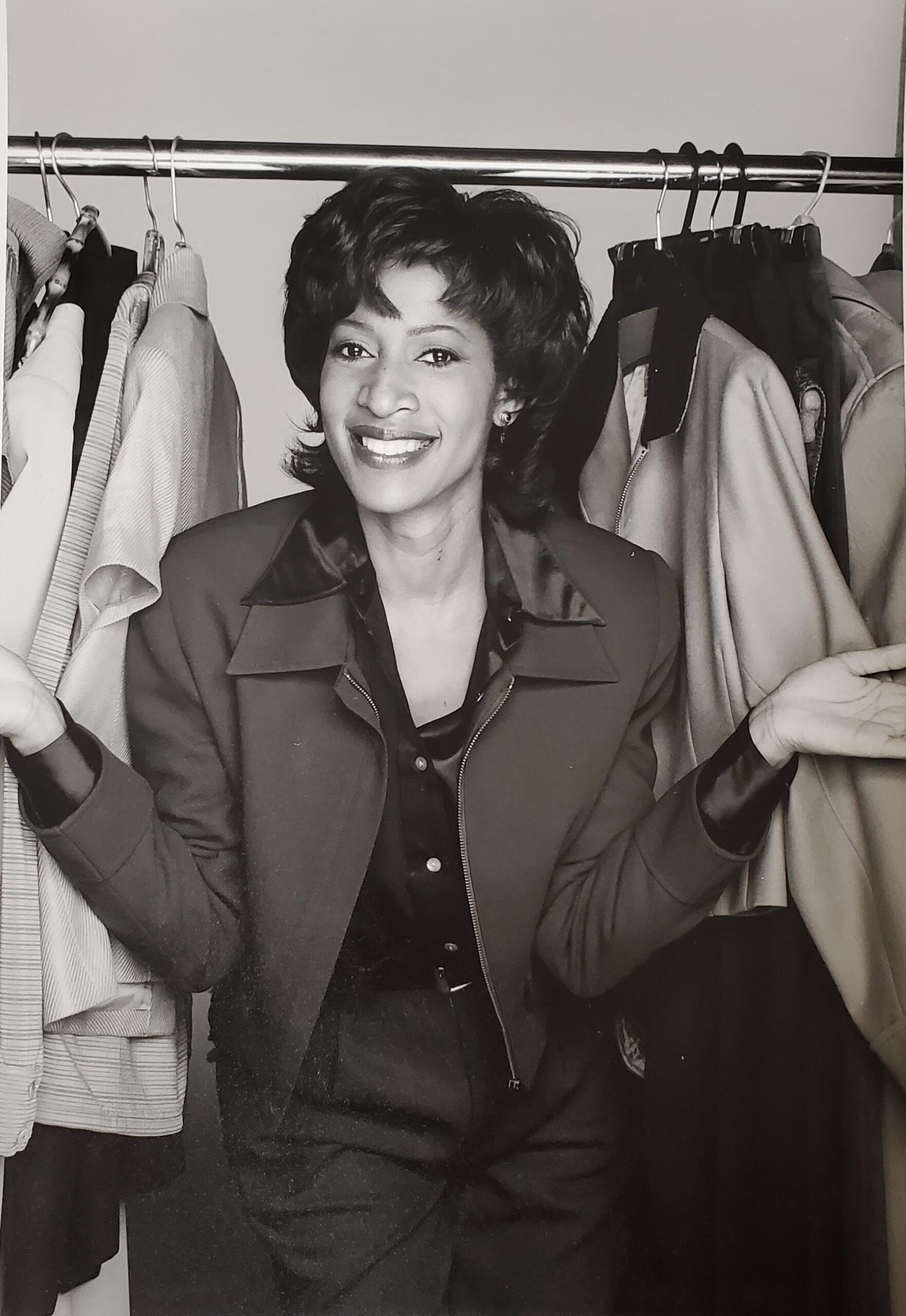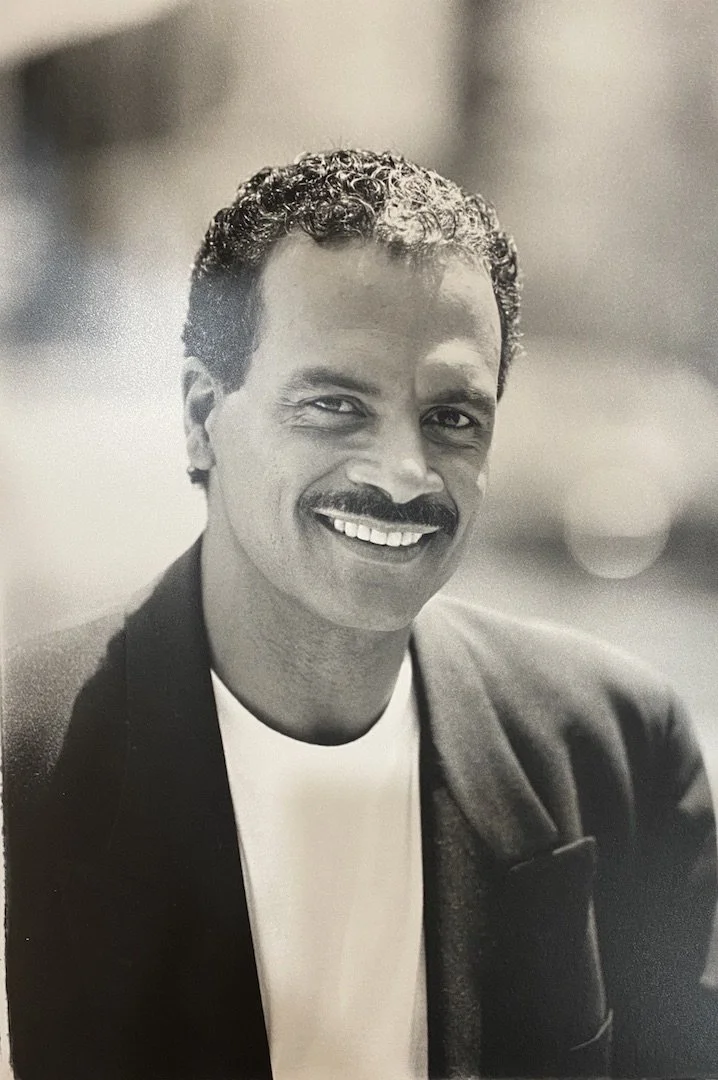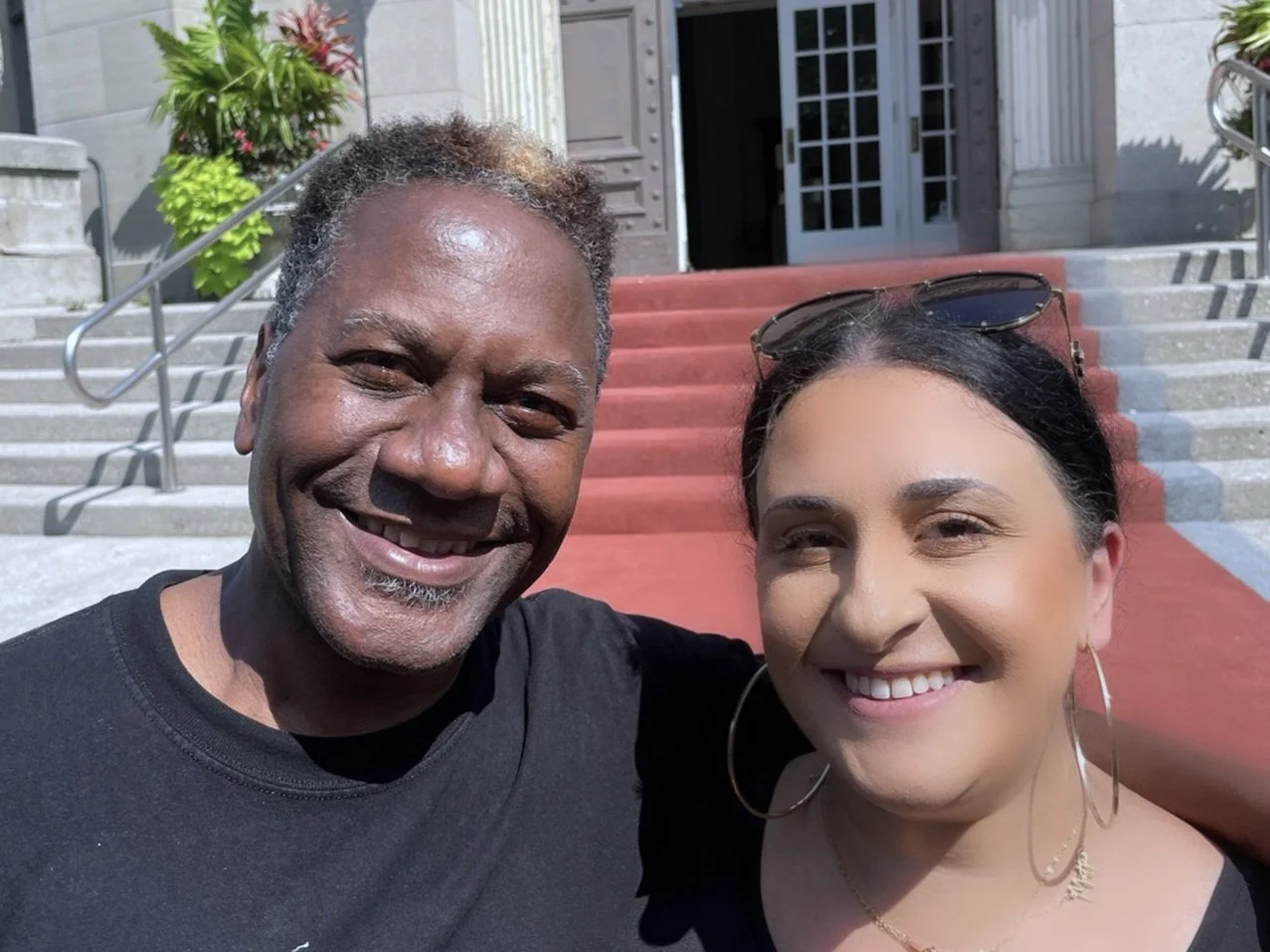Charmaine Gooden launches Black Fashion database
July 6, 2022
While doing a photo shoot in March 2020 that is part of the Black Artists Network Dialogue (BAND) leadership photo series that will be exhibited at the launch of the Toronto archives later this year, Charmaine Gooden broached the subject of establishing a Black Fashion Canada database.
“We were talking about the fact that not many people really know who came before when it comes to Black fashion in Canada,” said Donna Holgate who was the Fashion & Beauty Editor of the defunct Excellence magazine published by Share newspaper in the late 1980s and the first Black woman to host a daily national television program on style, fashion and beauty in Canada.
“Charmaine said it would be great to have a historic database so that people can understand there were Blacks in fashion who broke doors down and paved the way for this generation.”
Gooden’s vision became reality last month with the virtual launch of blackfashioncanada.ca to preserve, document and celebrate the contributions of fashion pioneers.
She has been a Toronto Metropolitan University (TMU) journalism and fashion instructor for the last two decades.
“The black and multicultural students would frequently tell me in one way or another that I inspired them to pursue a career either in fashion journalism or the fashion business,” she said. “They seemed to appreciate seeing representation which I knew is important. I knew that I wanted to document and show them representation, but after the George Floyd incident, you really could not have a conversation about the fashion industry without talking about race.”
The database contains short profiles, photographs, videos and archival material.
“What I hope to do is document the great achievements of individuals across Canada who made a difference,” Gooden said. “They contributed to the story of fashion in this country. Some of them left Canada and then came back and established their careers. I also wanted to highlight some of the systemic barriers put up since the 1960s. Black models were not considered for roles because of their colour, accent or hair. I wanted to show just how they overcame these hurdles through dogged determination and talent. Going forward, I want to include the tailors, dressmakers and hairstylists.”
What is the process for selection to be featured on the database?
“There is so much great work being done on the current generation, including the Black Designers of Canada database created by George Sully,” said Gooden. “I thought there was a niche for me because there are deceased pioneers and many who are still with us. I started with what I know and selected people from the 1960s to the end of the 1990s. I began with those I know and could get in touch with and I used a few of my contacts to reach out to the people in Montreal.
“Most of the profiles here are professionals who preceded and, in fact, paved the way for the digital age. In a world where an internet search has become the primary method of retrieving the past, their work threatens to be lost. Their contributions deserve to be credited for the digital record.”
While the focus is on fashion industry professionals, past and present, from Toronto and Montreal, Gooden said the goal is to expand nationwide.
The database features fashion designers, models, muses, influencers and leaders.
They include model, actress and fashion consultant Linda Carter and the late David Cardoza and Paula Holgate whose profile has so far attracted the most views.
Paula Holgate (Photo contributed)
“Paula was just an incredible creative mind,” said older sister Donna Holgate who is featured as a multi-media trailblazer in the database. “While in high school, she did a lot of fashion shows with people like Heather Salmon. They collaborated a lot. Straight out of school, she worked at Holt Renfrew in sales and then Creeds recruited her to be a buyer. She grew her hair naturally and loved anything that had to do with fashion and fitness. My sister was kind, generous and way ahead of her time.”
Donna Holgate (Photo contributed)
Supermodel Rose Francella and Jamaican-born Cardoza, who succumbed to cancer in 1997, worked on many projects.
“We did some photo shoots, but most our time was spent doing fashion shows,” she said. “Our friendship was sealed during a six-hour train ride to Montreal for a show. We got to learn a little bit more about one another. It went from our relationship to me meeting Donna (his wife) and basically my family became their family.”
David Cardoza (Photo contributed)
Former Eaton’s fashion co-ordinator Evangelina (Vangie) Sipidias hired models for catalogues, billboards and direct mail campaigns.
“David was good-looking and he had the perfect size that fit the clothing really well,” she said. “He was also very pleasant, a team player, easy to work with and extremely proud of his family.”
Inspired by Donyale Luna considered the first Black super model, Carter started modelling as a teenager.
“I didn’t know that this career was possible until I saw Donyale on the cover of an Ebony magazine,” said the daughter of the late George Carter who was the first Canadian-born Black judge. “Back in the late 1960s, I was among the first Black Canadians in this business and it was very difficult. I was so excited to do something for a catalogue only to see that the dress, and not me, made it. There was a time I was supposed to do a shoot, but I was told they already had a Black back. This database is extremely timely and important as it will shed light on some of the trailblazers who made it in the industry despite the obstacles they encountered.”
Carter’s many fashion credits include work for Vogue Paris, Alfred Sung, Gucci and Pierre Cardin.
Linda Carter (Designer is Wayne Clark and photo contributed)
Gooden leaned on several creatives for support for the database.
TMU Assistant Professors Dr. Kimberly Jenkins who, five years ago, developed an institutionally funded digital humanities project, ‘The Fashion and Race Database’, that she turned into an independent global learning platform last year, and Dr. Cheryl Thompson played pivotal roles in the development of the huge undertaking.
“Kimberly shared key information that helped me to bring my vision to fruition,” said Gooden. “The same goes for Cheryl who has been there from the beginning encouraging me and even now, at the launch, is with me and looking for opportunities to help support and promote the database.”
Stylist, instructor and entrepreneur Iris Simpson, Donna Holgate and BAND Director Karen Carter also made significant contributions to the project.
“It has been the Black sisterhood that helped me,” noted Gooden who was turned on to fashion and style while growing up in Jamaica.
She migrated to Canada in the late 1960s.
Gooden has fond memories of custom fit school uniforms and the exotic dresses she saw while looking through beauty magazines.
“To be surrounded by so much natural beauty and to be part of a culture that loved beauty also added to me having an appreciation for fashion and style,” she added.
In the 1980s, Gooden had a hard time finding an instructor for her final thesis on the emerging fashion industry in Canada.
“What I learnt from that experience is that journalism doesn’t value this soft creative aspect of reporting,” said the Carleton University journalism graduate. “I knew how rich the subject matter was and, in a way, I wanted to leave something for the young journalists coming up who I want to do something. By doing this database, I want to leave something for them to start with. I would have loved to have something like this when I was doing my thesis.”
Starting her journalism career at Chatelaine as a Beauty Editor, she worked for Images and Zoomer magazines and hosted a television show, ‘The Beauty Guide’ on W Network before joining TMU in 2002.










